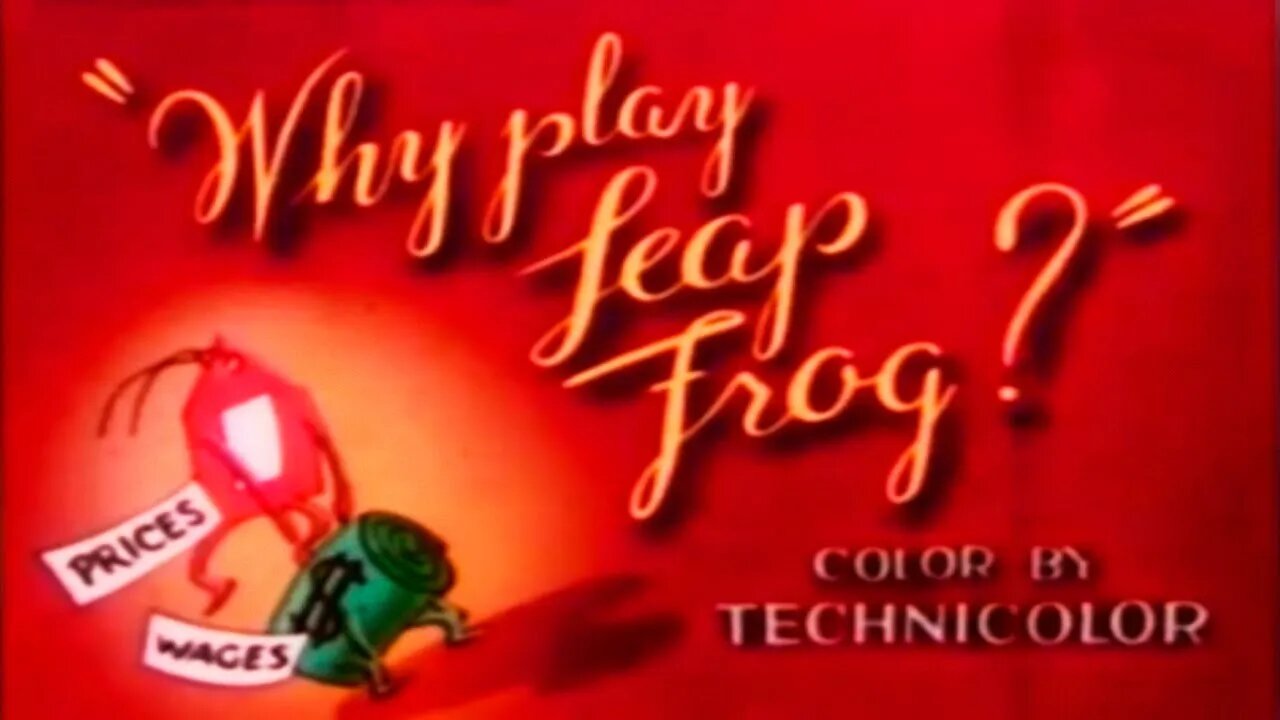Premium Only Content

Why Play Leap Frog? (1949)
Sponsor: Harding College
Production: John Sutherland Productions, American Studies Institute at Harding College
Animation Studio: John Sutherland Productions
Distributed by: Metro-Goldwyn-Mayer
Cartoon Characters: Joe, Workers.
Awards: Winner, Freedoms Foundation Award, 1951.
Originally Released in 1950 (Estimate).
Originally Released Theatrically.
Running Time: 9:30 minutes.
TechniColor
Joe, who paints doll faces at the Dilly Dolly doll factory, is down in the mouth. He can't make ends meet. An unexpected wage raise brightens his spirits. Now he can buy his young daughter a birthday present. He decides upon, not surprisingly, a doll. At the toy shop, he flies into a rage. The doll costs two dollars. He knows there is only ten cents worth of material in the thing. The store manager tries to explain that because Joe's company increased the cost of its latest shipment, his store had to increase the price of the doll. Joe will have none of it. It's up to the narrator to talk some sense into Joe and give him an economics lesson. Soon Joe understands such things as labor costs and profits. Suddenly he hits upon an idea that improves productivity at his company, drives down costs, and thus improves the economy. Now, a Dilly Dolly doll is only one dollar; and Joe's wage raise really means something.
Inflation is explained in this Cold War-era cartoon aimed at convincing workers that increased productivity brings about greater purchasing power. What plays leapfrog are wages and prices in a capitalist economy, as is explained to the cartoon's hero, an employee at the Dilly Doll Company who gets upset after getting a raise and then finding out that the price has gone up on his own company's product. The explanation given for inflation is that labor costs so darn much. Essentially, the doll's higher price is directly attributed to worker Joe's raise. But there's a way out in the form of technology: advances in manufacturing technology increase productivity, and this keeps wages ahead of prices.
© John Sutherland Productions
-
 10:12
10:12
Space Ice
23 hours agoBallistic: Ecks vs Sever - Underrated Masterpiece Or Incoherent Mess?
20.6K9 -
 2:43:07
2:43:07
RG_GerkClan
6 hours agoLIVE: Lets Get to 500 FOLLOWS! - Escape From Tarkov - Gerk Clan
22.9K4 -
 LIVE
LIVE
Vigilant News Network
20 hours agoHillary Clinton EXPOSED In Another Massive Hoax | The Daily Dose
1,891 watching -
 1:00:17
1:00:17
Trumpet Daily
1 day ago $6.55 earnedRINOs Are Trump’s Biggest Enemy Now - Trumpet Daily | Nov. 22, 2024
12.4K21 -
 17:47
17:47
RealReaper
15 hours ago $0.44 earnedGladiator 2 Another Pointless Sequel
7K4 -
 45:45
45:45
PMG
13 hours ago $0.30 earned"Hannah Faulkner and Stephanie Nash | No Farms No Food"
5.78K1 -
 27:11
27:11
Degenerate Plays
1 day ago $0.23 earnedReturn Of The Online Girlfriends - Stellar Blade : Part 30
4.82K1 -
 7:16
7:16
SeasonofMist
2 days agoSOLSTAFIR - Fjara (Official Music Video)
3.87K3 -
 3:54
3:54
Good Kid Productions
9 days agoTrump just broke legacy media. We're building something better.
2.79K1 -
 3:13:17
3:13:17
Boxin
7 hours ago(Rumble push to 50 Followers!) (alerts Working...?) Spoopy Month!!!! Resident Evil 7 Biohazard 4
75.9K3